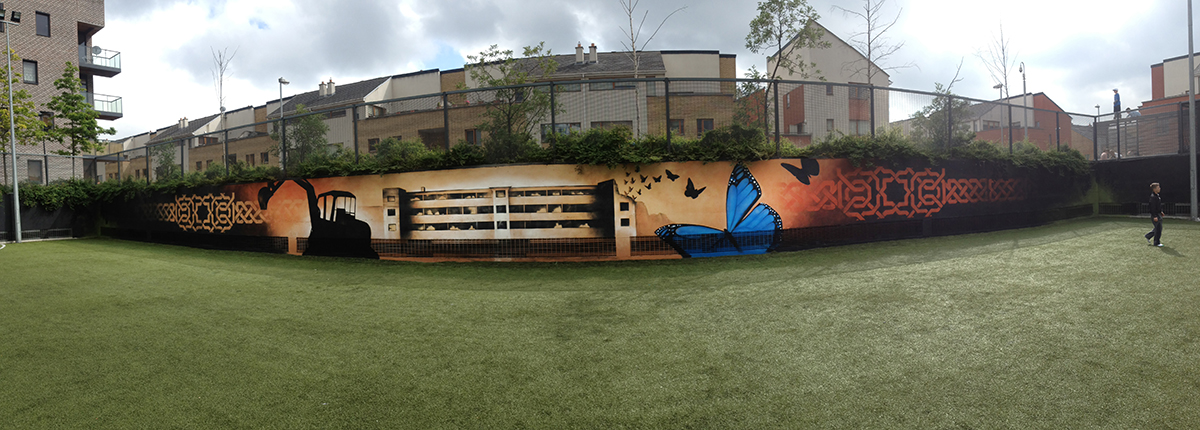Image turned thirty years old this April. As we reflect on what’s ahead, we asked fifteen visual artists and two singer-songwriters to tell us what they learned and how they changed after turning thirty. Click here for the full collection.
Over the years, I traveled the world, from Australia to Africa, Canada to Malaysia. My murals were covered by CNN and the BBC, the New York Times and the Guardian. Changing the world through art was my dream, and I was in the middle of it.
Eleven years ago, when I was twenty-nine, I was painting a mural in my home city of Birmingham, England. It was a sunny day, a large crowd had gathered, and a BBC crew was filming. There was a great buzz. People were complimenting the work—I get that a lot, and I have to admit, it’s fulfilling.

Mohammed Ali in collaboration with Martin Travers. “Transformation,” 2014. Spray paint. Fatimah Estate, Dublin. 8 x 148 feet.
Then a car pulled up alongside me. It honked, and a young man called out in a very local accent, “Hey, bro, what do you think you’re doing?” Bemused, I shouted back, “I’m painting a mural!” I still hear his reply vividly in my head: “What do you think this is, the Bronx?”
I couldn’t believe it. Here was someone from the neighborhood who didn’t want this mural. He was young and seemed fairly streetwise. What made him say such a thing? Most people appreciated my murals, which carry a positive, universal message. What was wrong with this mural?
Most would dismiss this lone voice. You’ll always get one, they’d say. You can’t please everybody. But it bothered me.
After that day, I began to question how public art is created. Who is public art for? Was this mural a selfish imposition upon a community that I was not engaging with? What do my murals really look like to locals? How do they make people feel?
After a few months, I began experimenting with new forms. My earlier works were often explosions of color. From my new perspective, they now seemed jarring, not melding with their surroundings. I started to adopt palettes that blended with and complimented their environments. I began to feel that at times I had been shouting for the sake of shouting. At times you need to shout, but I began to learn the power of not shouting.
I’ve come to believe that a mural can’t just be cut and pasted into a location, either in its look or its message, especially in a residential area where people see it every day on the way to school or work. I searched for new ways to listen to people in the neighborhoods where I painted, to engage with them in more meaningful ways, so that I could give them art that really belonged in their worlds. It’s true that public art won’t ever please everybody, but at least I can try.





